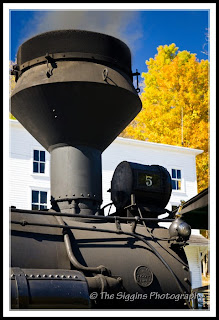Being primarily a landscape photographer, I almost always travel with my tripod but that day I didn't have it. I needed to be able to wander around and a tripod would only get in the way.
 Then I looked in one of the windows at the fort and saw that a table had been set with period items. I was outside in bright sun and the inside was very dark (no electric lights in 1776). No way I was going to be able to capture the entire range of light with a single exposure. I needed to take multiple shots at different exposures to be able to blend time together using HDR software. I always use a tripod when shooting for HDR so that the camera does not move. Any camera movement will make an HDR image useless. I decided, what the heck. I have the time and it's only pixels. I'll give it a try.
Then I looked in one of the windows at the fort and saw that a table had been set with period items. I was outside in bright sun and the inside was very dark (no electric lights in 1776). No way I was going to be able to capture the entire range of light with a single exposure. I needed to take multiple shots at different exposures to be able to blend time together using HDR software. I always use a tripod when shooting for HDR so that the camera does not move. Any camera movement will make an HDR image useless. I decided, what the heck. I have the time and it's only pixels. I'll give it a try.When I got home and started processing the images the result I got was totally unexpected.
My three exposures were at 1/6, 1/13, 1/25 of a second, really too slow to hand hold and
I never expected the the shots to line up, but they did!
One of my sayings is "You'll never get the shot if you don't go". That usually involves getting up around 3 AM and driving to get a sunrise that may or may not work. My new saying is "You never know what you'll get until you try". Conventional photography wisdom said this shot was a waste of time. If I had followed conventional wisdom I never wold have gotten this photo.
This has become one of my favorite shots. Maybe because I never expected it to work or maybe because it is different from what I usually shoot. I don't know if anyone else will like it at all, but I went and printed it and it is for sale at the Star Trails Downtown Gallery in Kingsport. Stop by the gallery and check out all the artwork that is on display. It's really a nice gallery and some very talented people are represented.
Star Trail Gallery
246 Broad Street, Kingsport, TN 37660
Tuesday – Thursday | 11 AM – 7 PM
Friday & Saturday | 11 AM – 8 PM



















